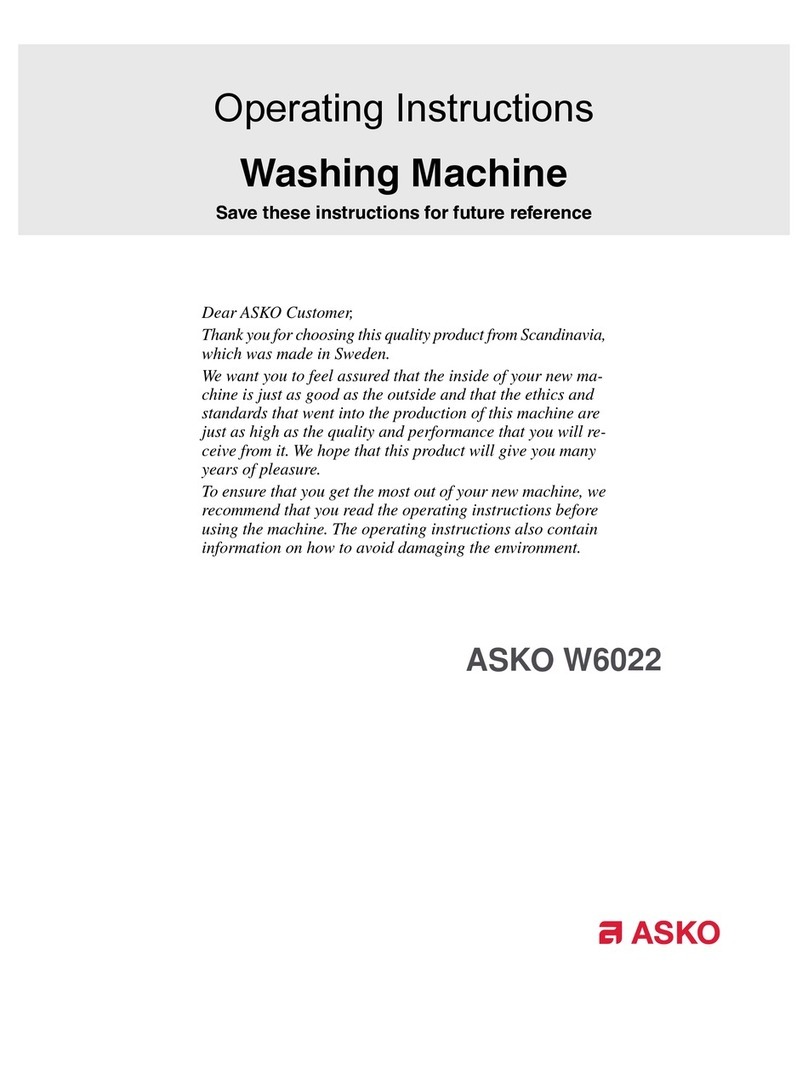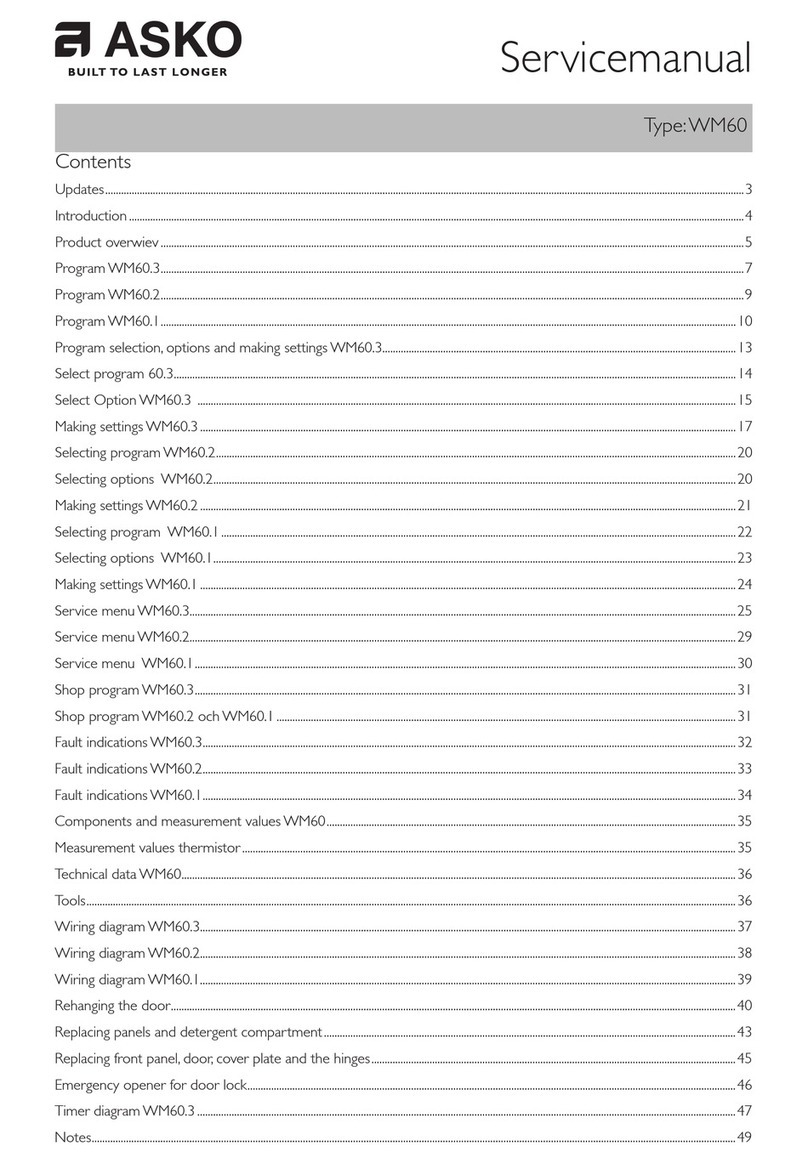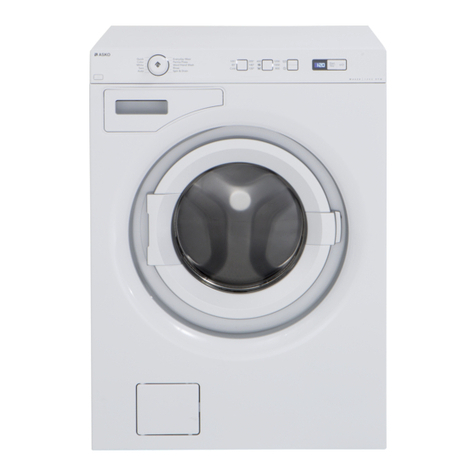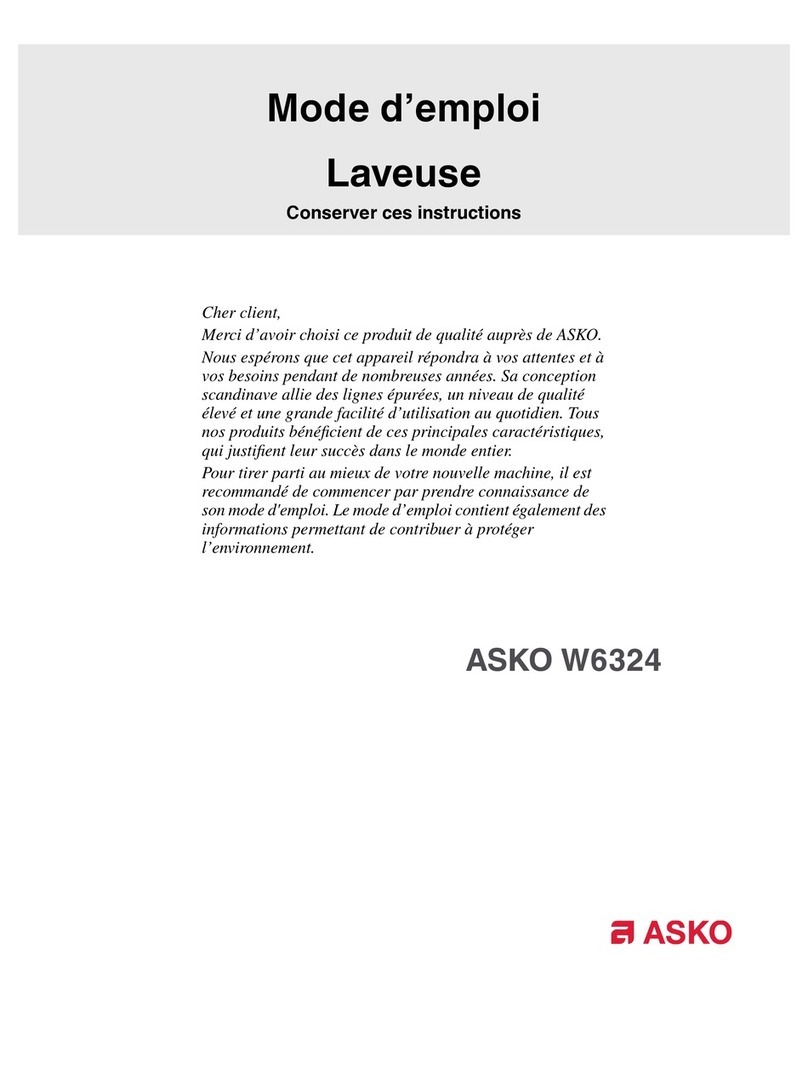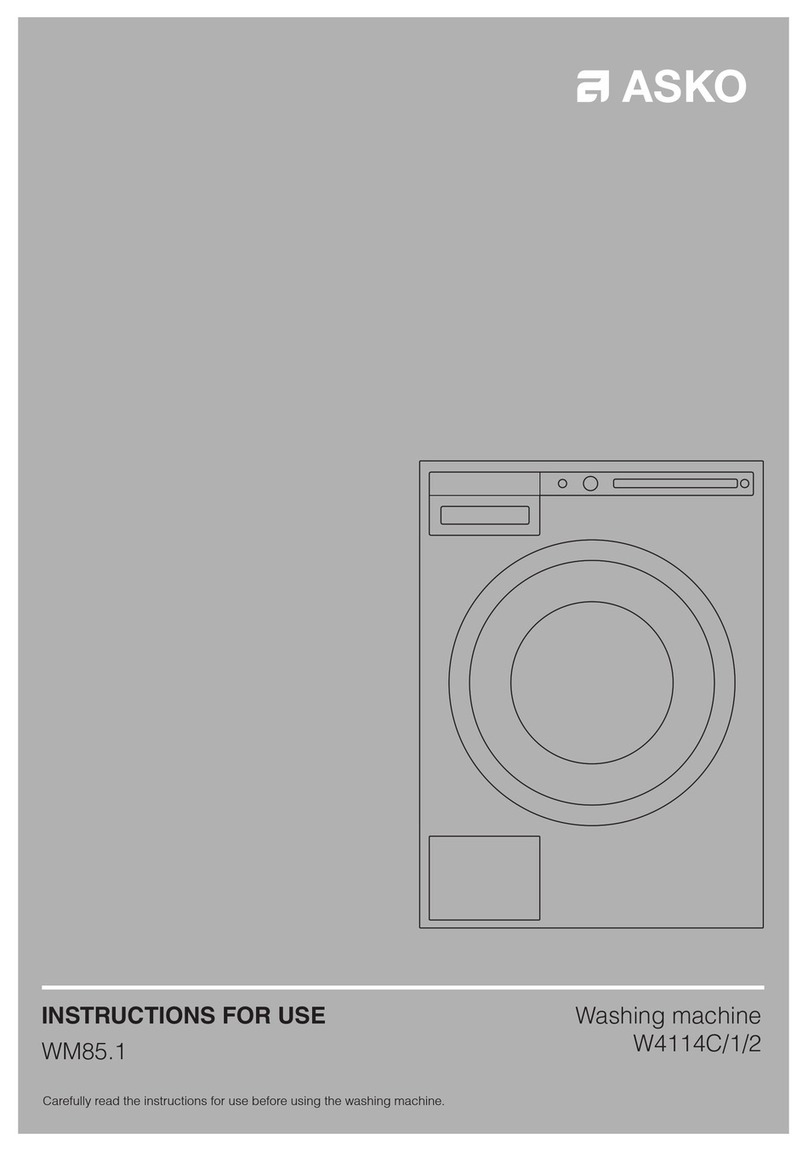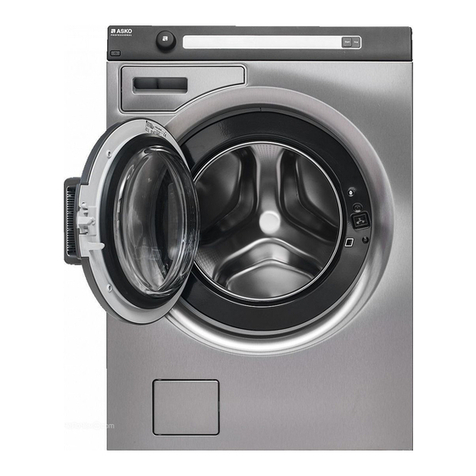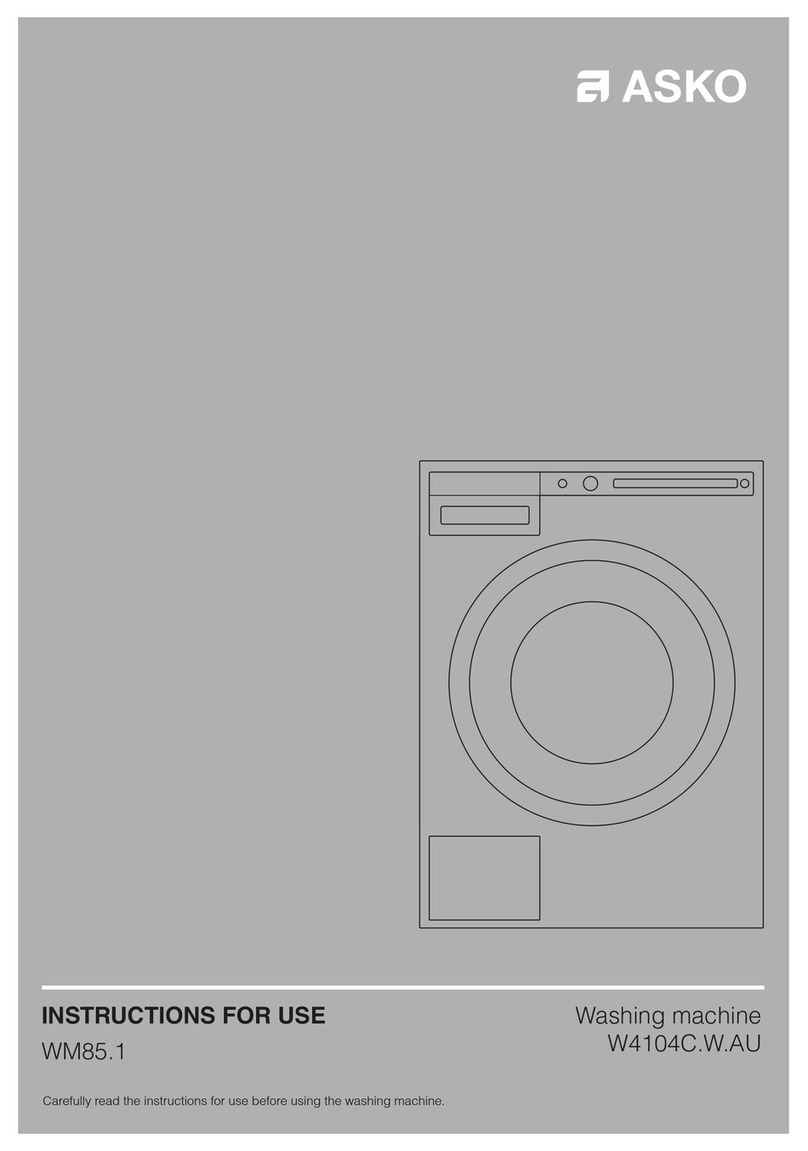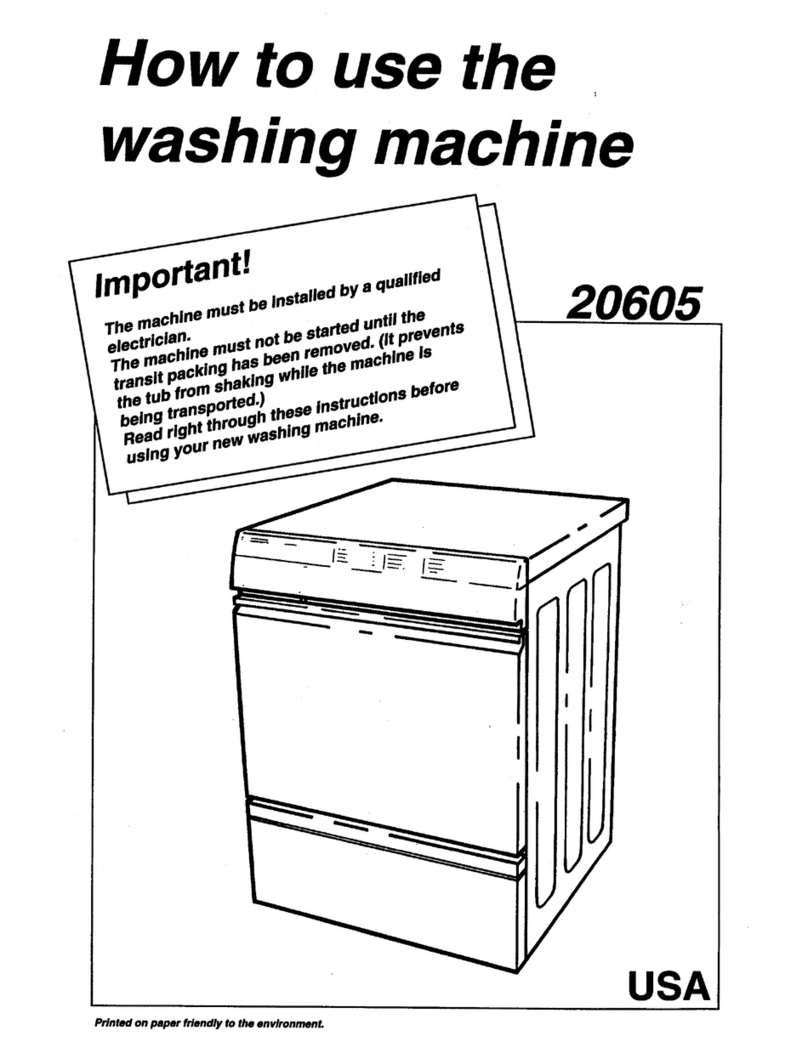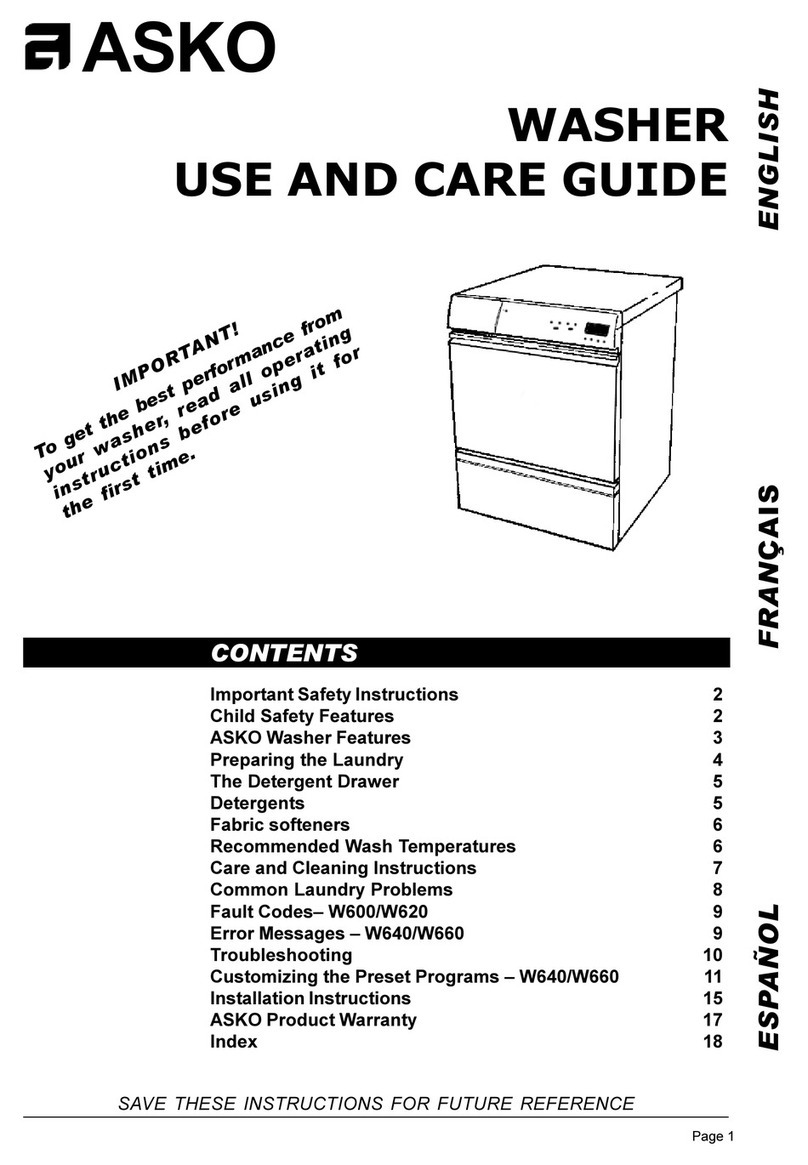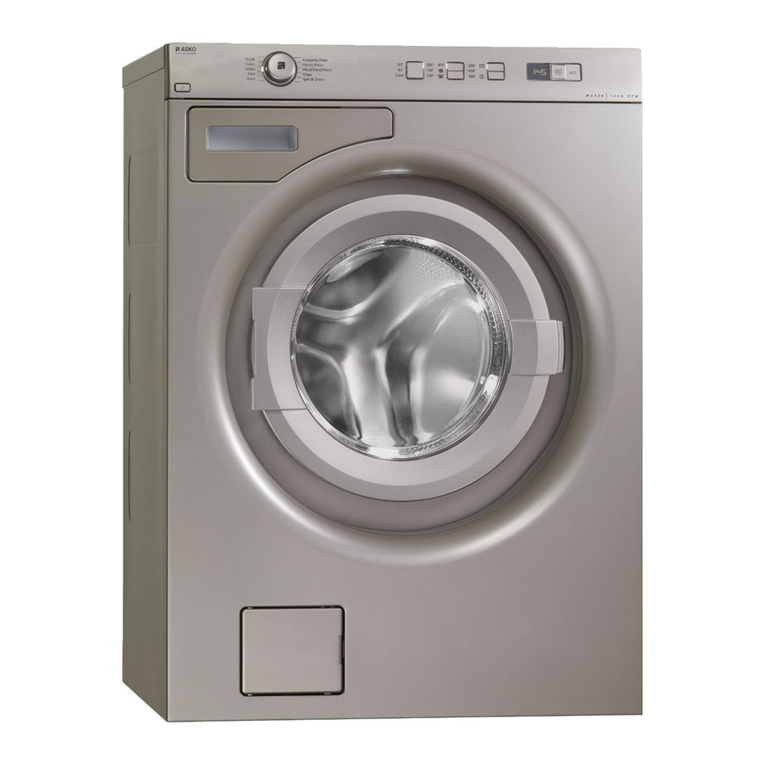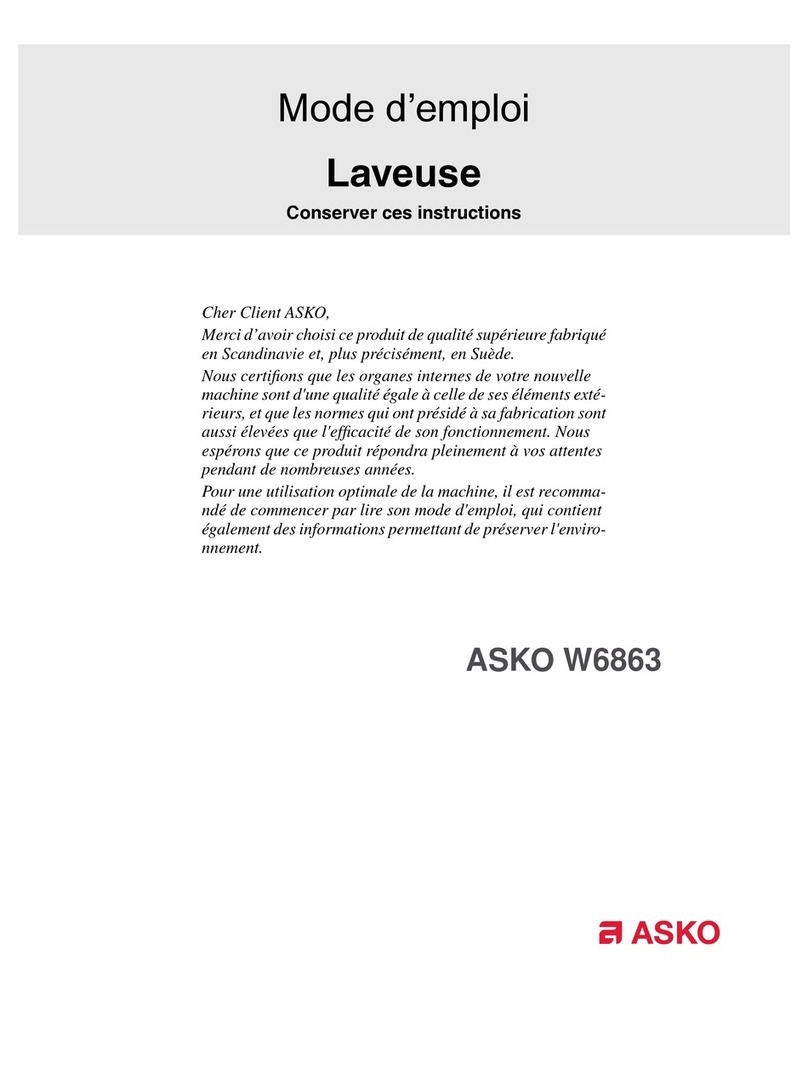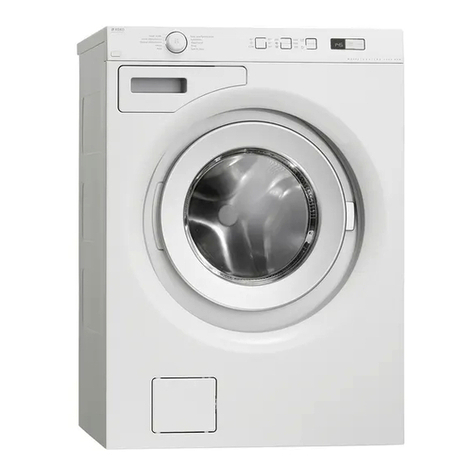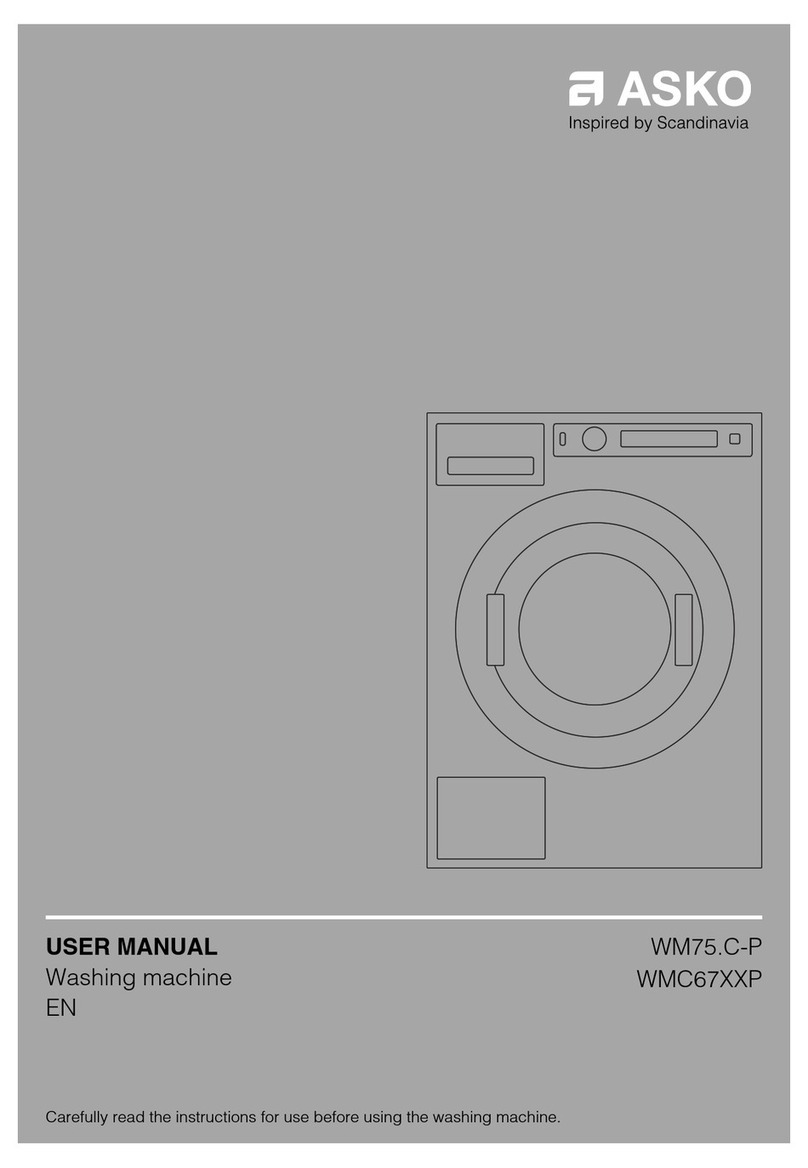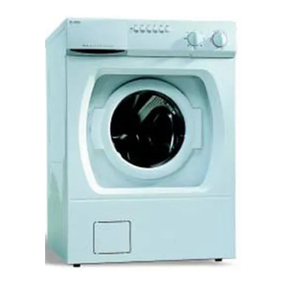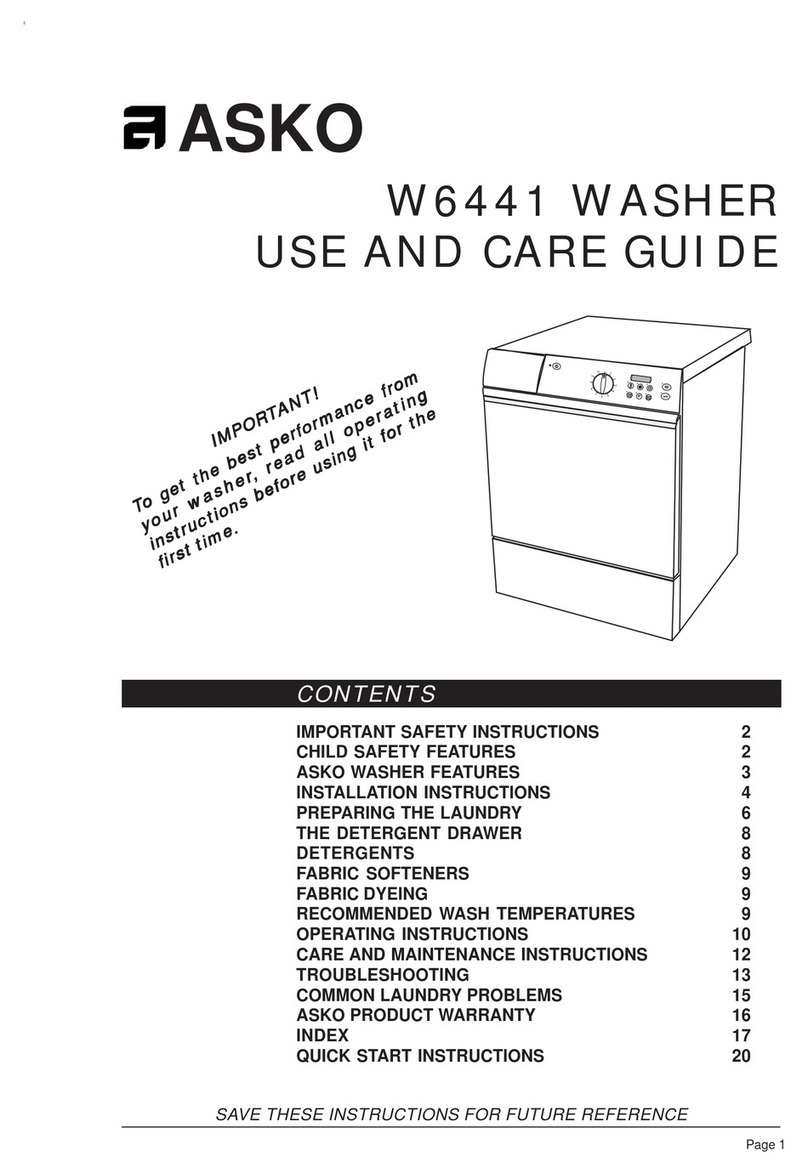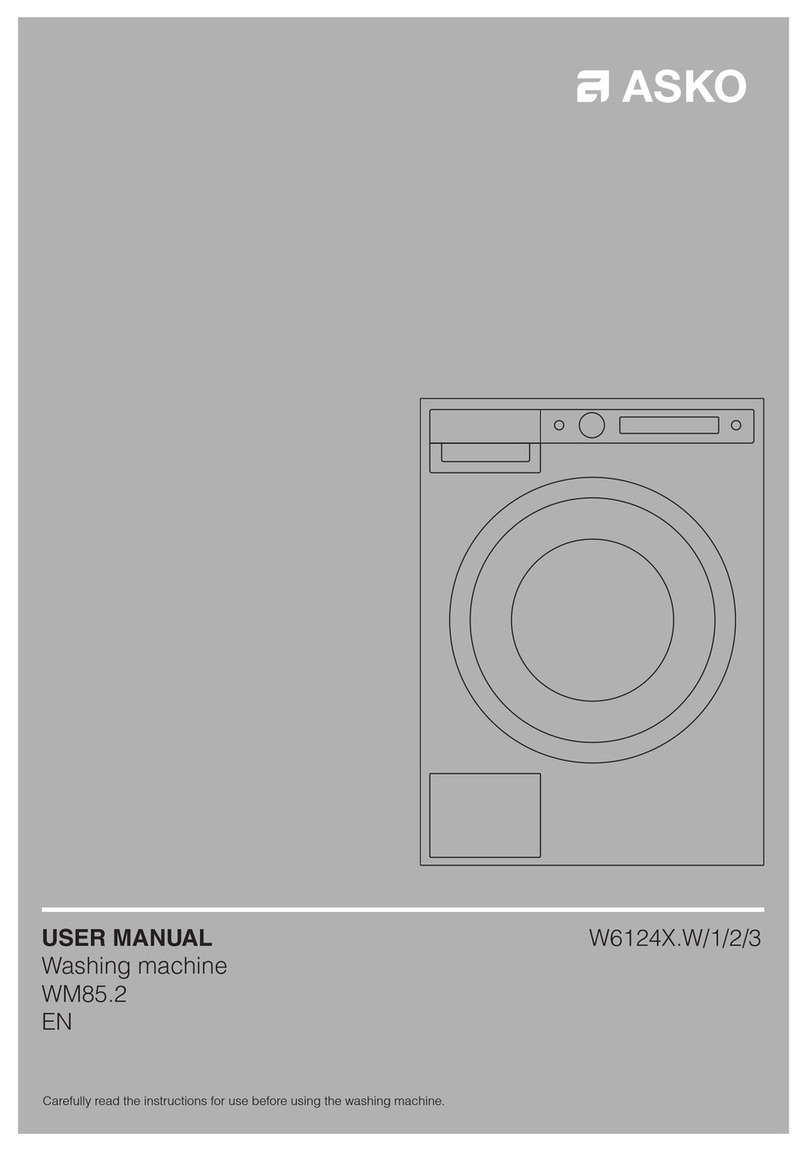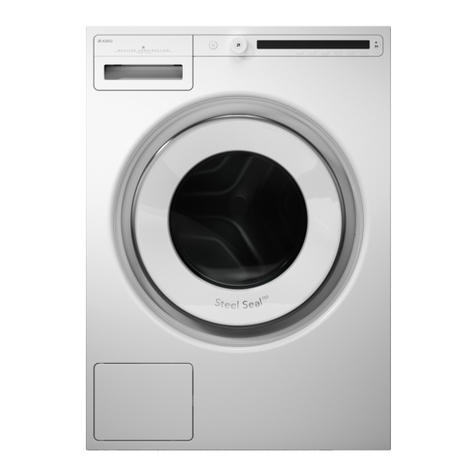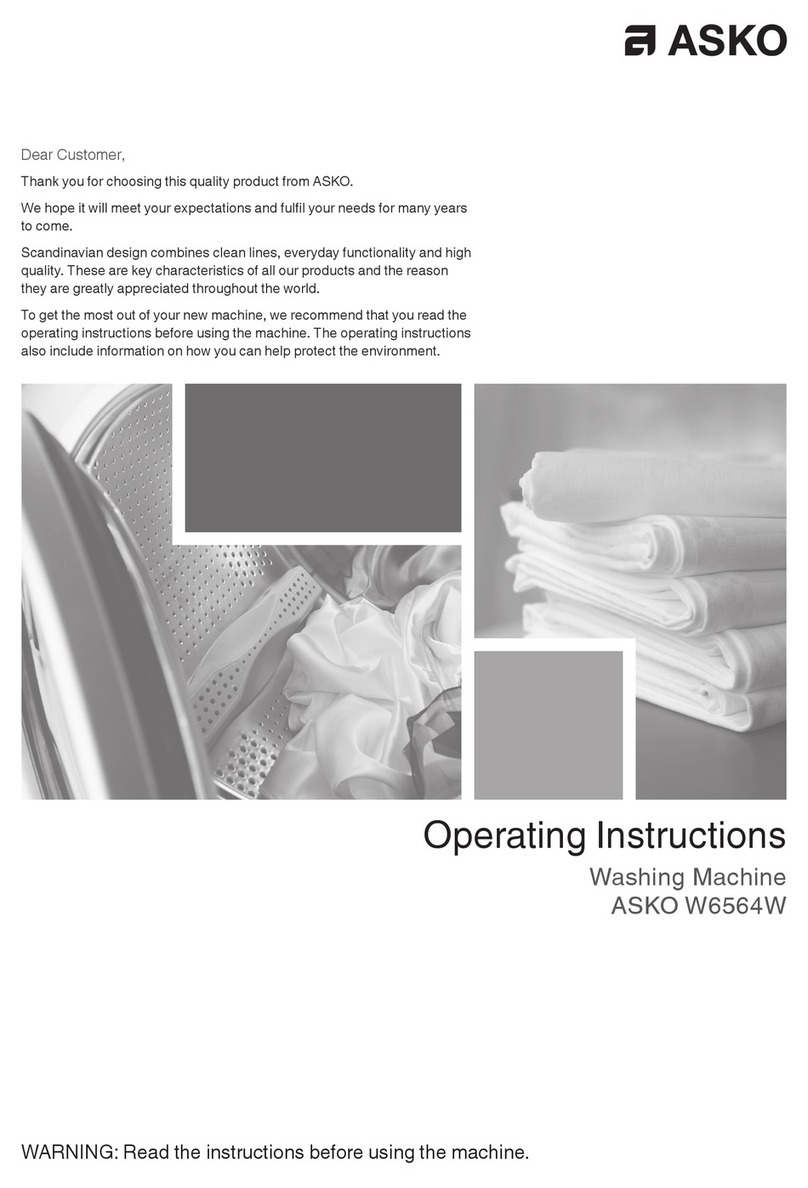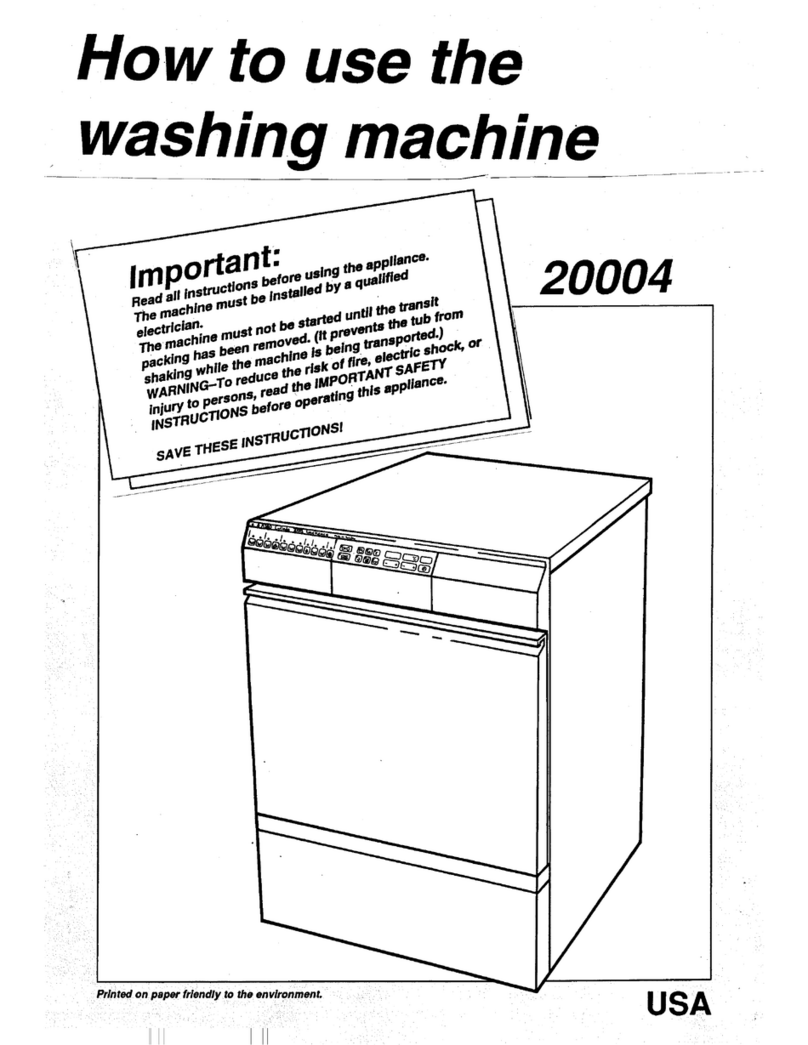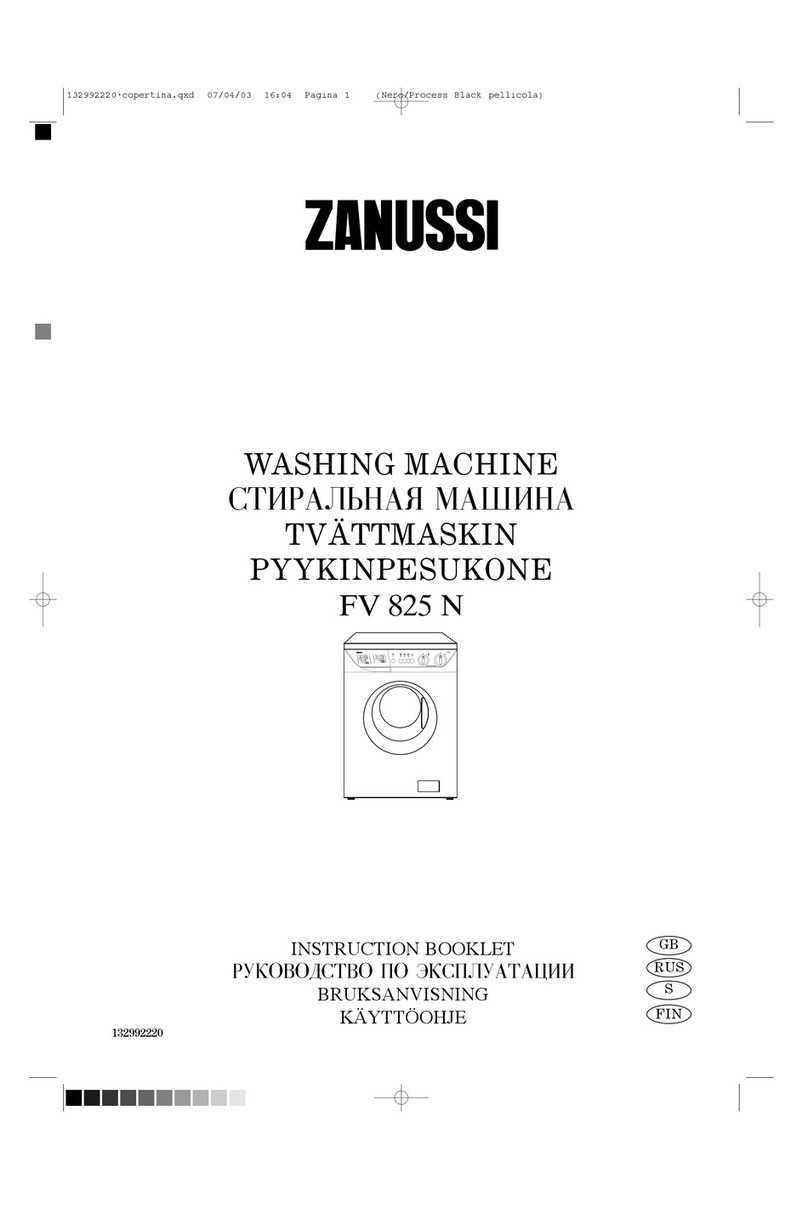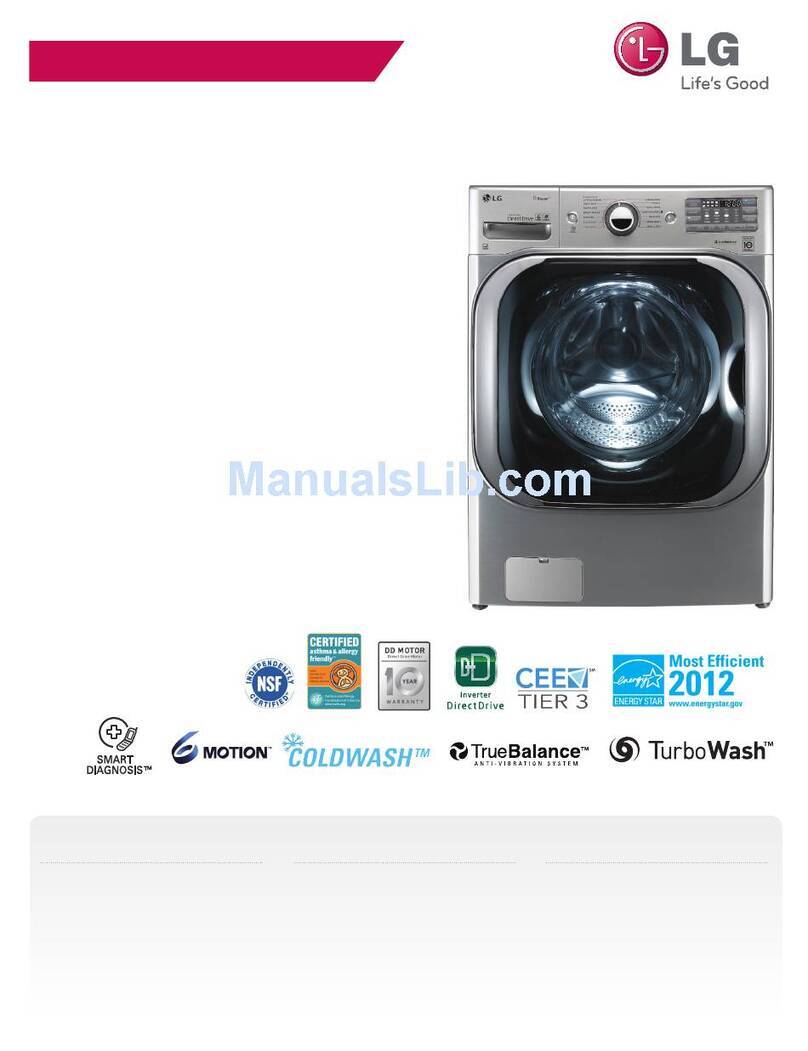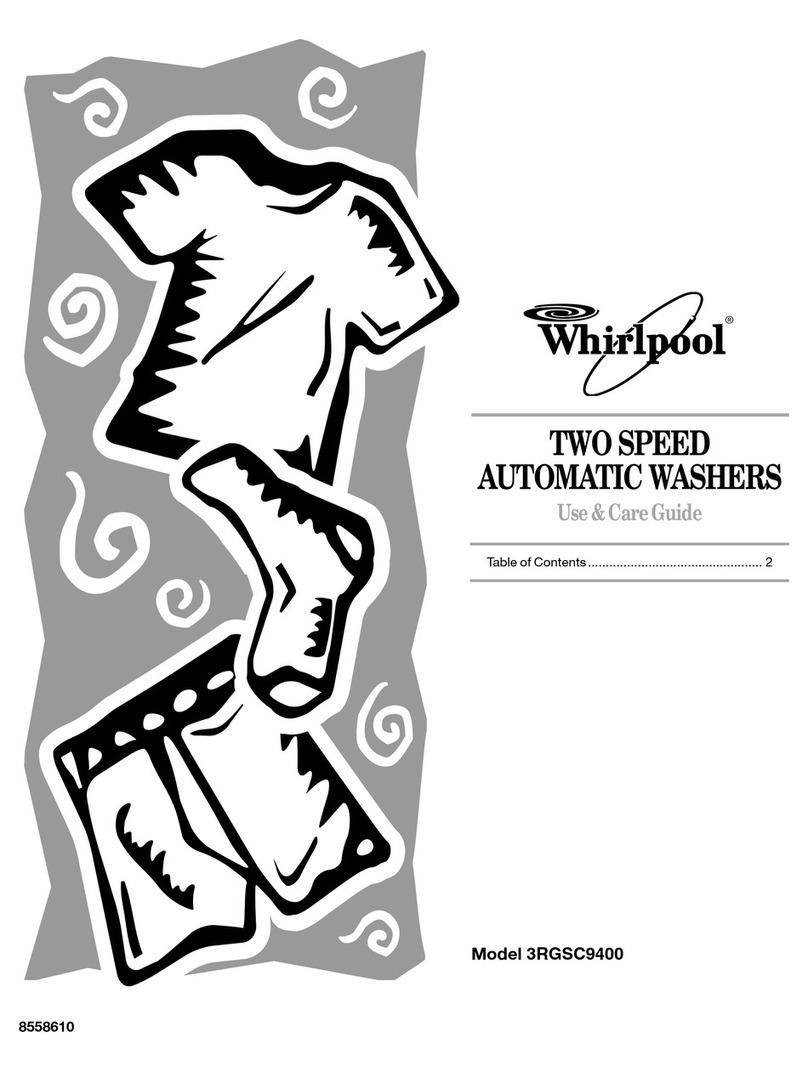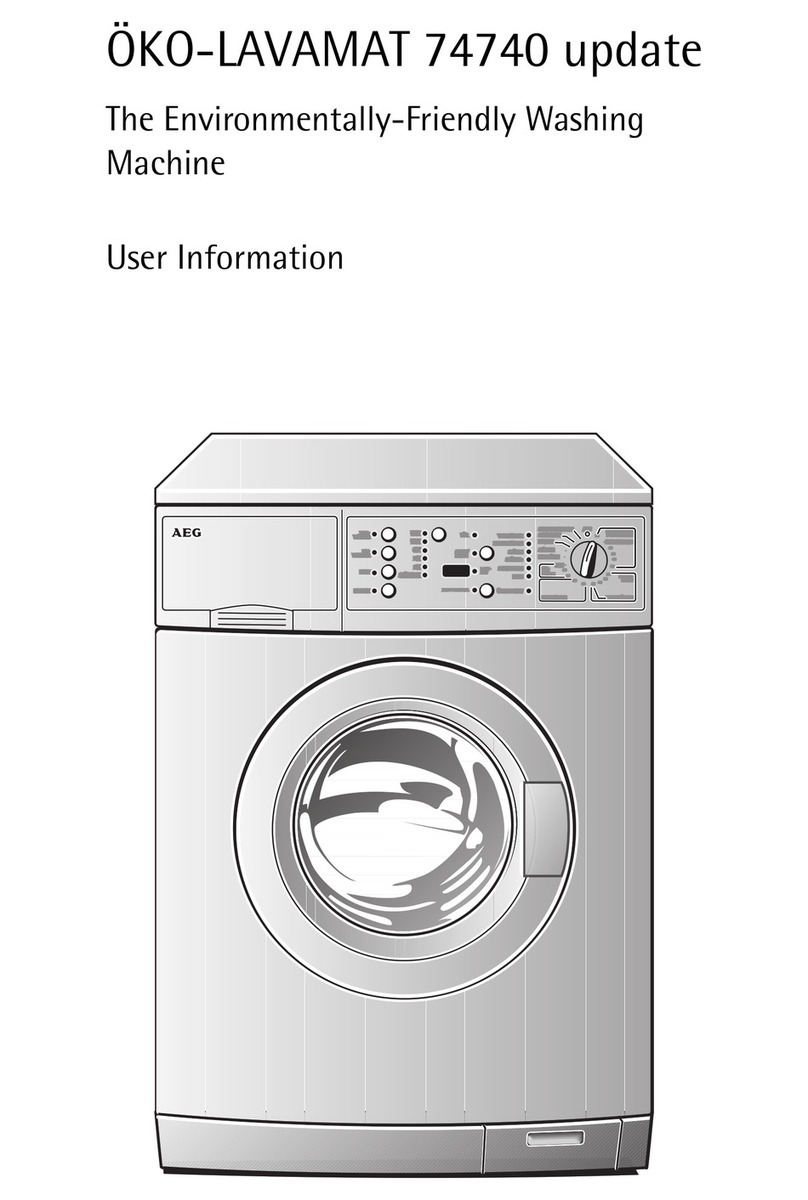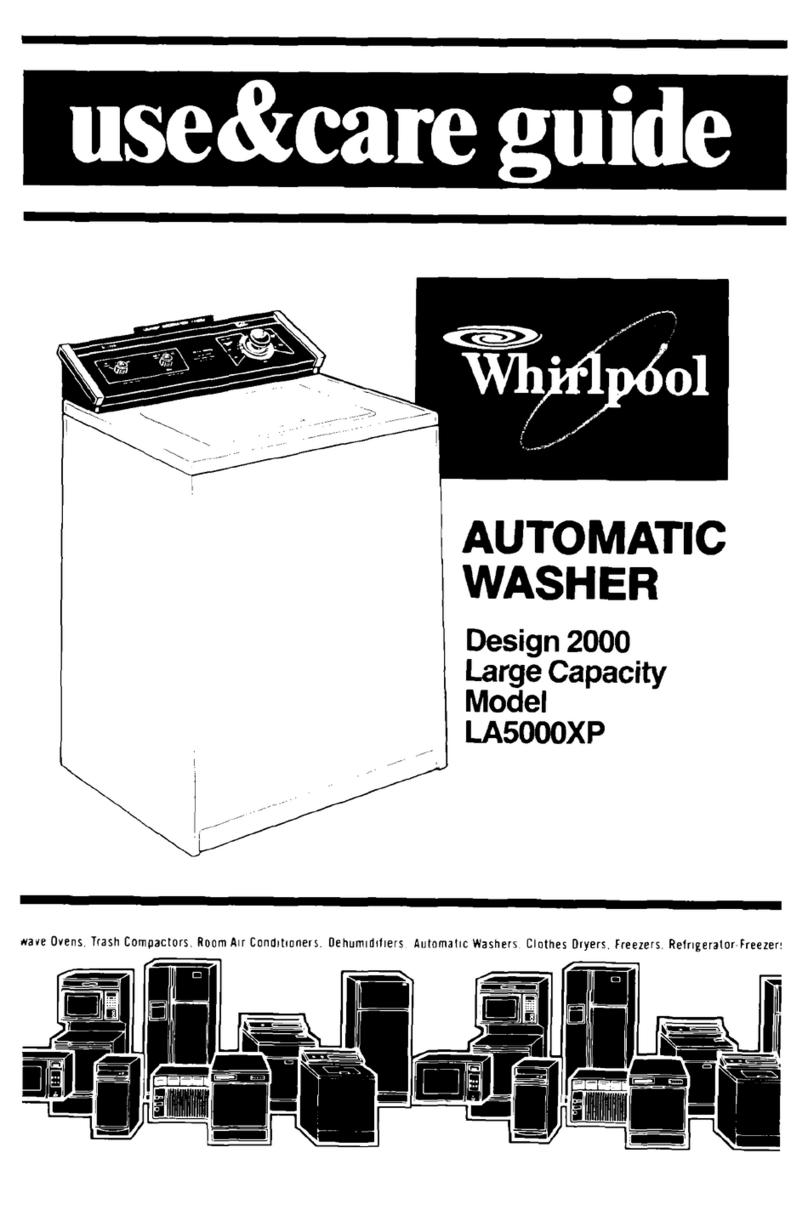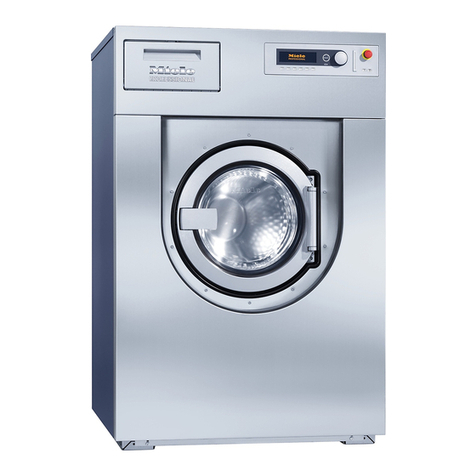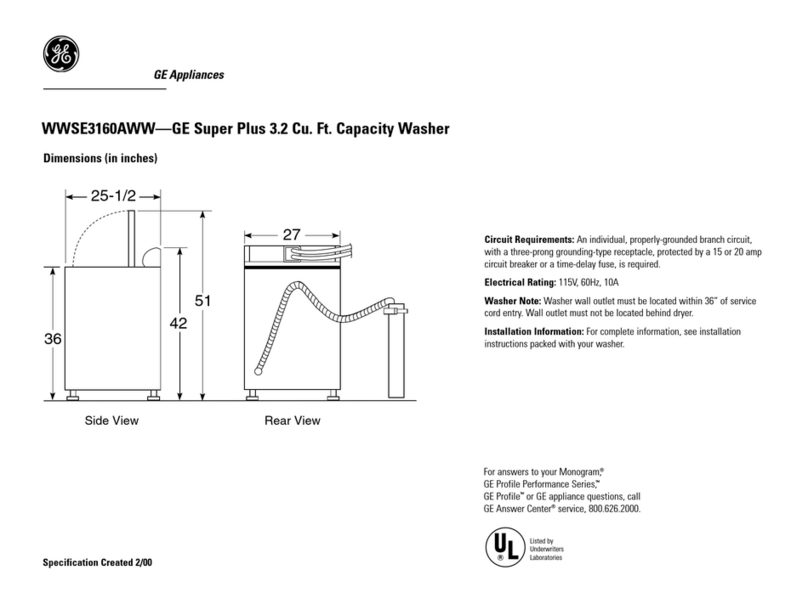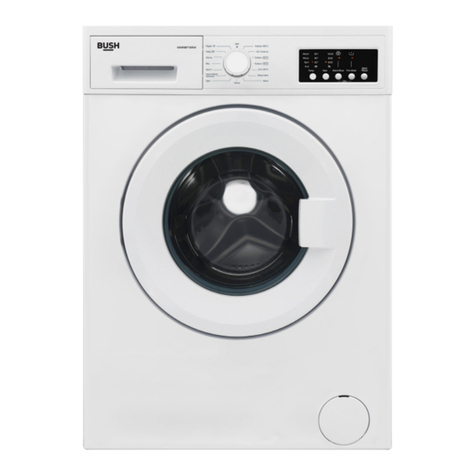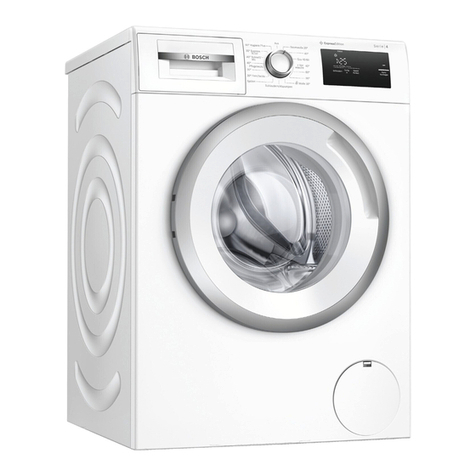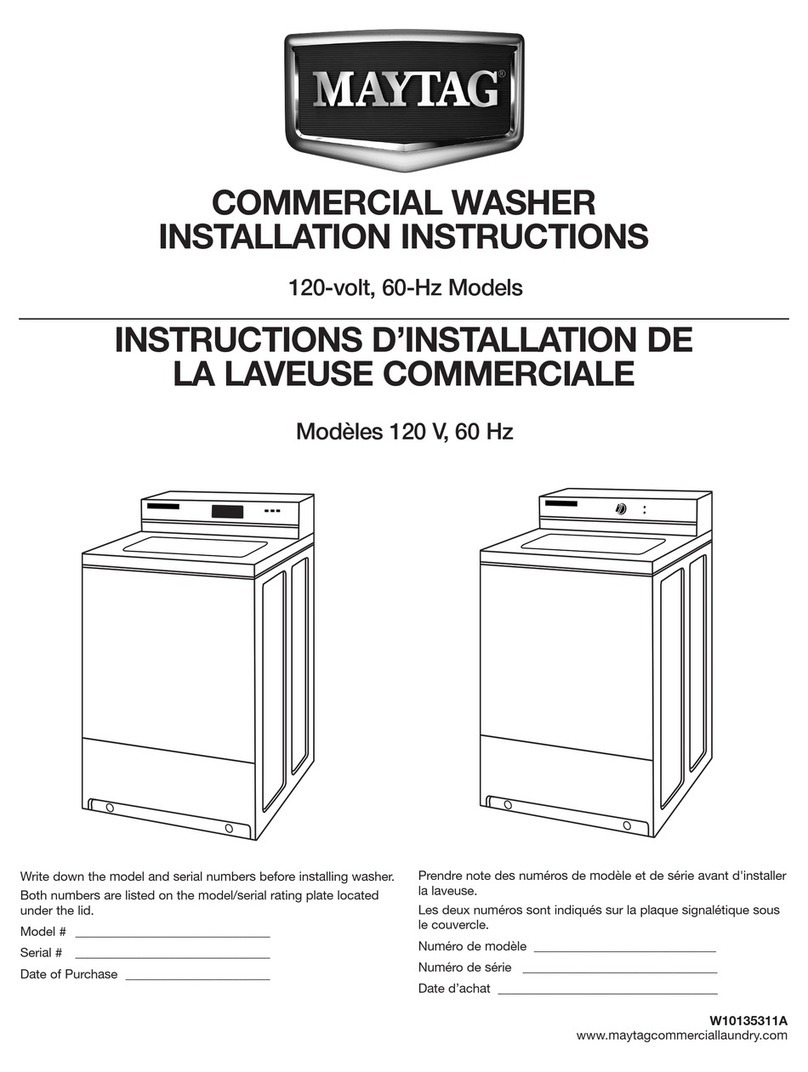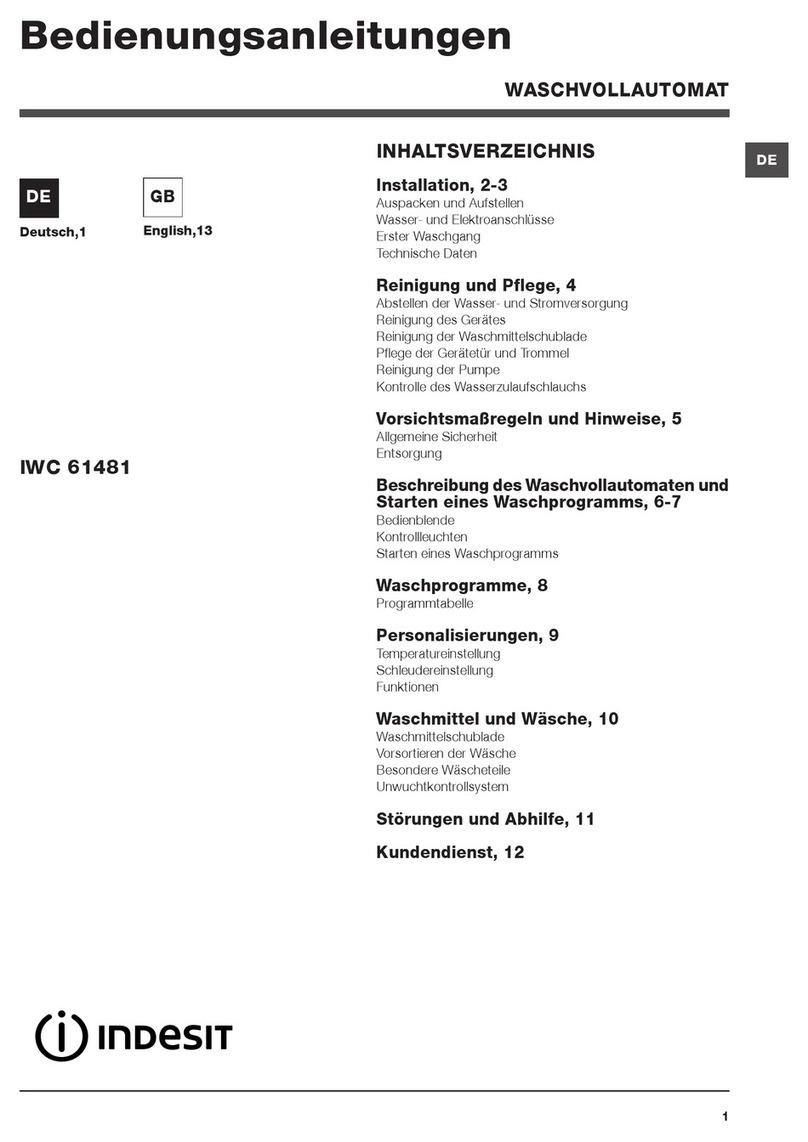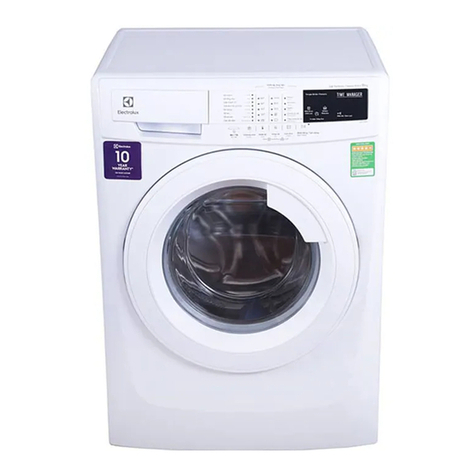
Page 2
To reduce the risk of fire, electric shock, or injury to
persons when using your appliance, follow basic
precautions, including the following:
♦Read all instructions before using the appliance.
♦Do not run appliance while you are out of the home.
♦Do not allow children to play on or in the appliance.
Close supervision of children is necessary when
the appliance is used near children.
♦Before the appliance is removed from service or
discarded, remove the door to the washing
compartment.
♦Do not reach into the appliance if the drum is moving.
♦Do not install or store this appliance where it will be
exposed to the weather.
♦Do not tamper with controls.
♦Do not repair or replace any part of the appliance or
attempt any servicing unless specifically
recommended in the user-repair instructions or in
published user-repair instructions that you
understand and have the skills to carry out.
♦Do not add gasoline, dry-cleaning solvents, or other
flammable or explosive substances to the wash
water. These substances give off vapors that could
ignite or explode.
♦Under certain conditions, hydrogen gas may be
produced in a hot water system that has not been
used for 2 weeks or more. HYDROGEN GAS IS
EXPLOSIVE. If the hot water system has not been
CHILD-SAFE DETERGENT DRAWERCHILD-SAFE DETERGENT DRAWER
ASKOwashershaveachild-safetycatchonthedetergent
drawer that can be engaged to prevent a child from
opening the drawer and possibly coming into contact
with the detergent or fabric softener. Refer to page 5 for
instructions on how to engage the child-safe catch.
CHILD-SAFECHILD-SAFE TEMPERATEMPERATURE KNOBTURE KNOB
Models W600 and W620 have a child-safety catch that
can be engaged to prevent children from tampering
with the temperature knob. The catch is located below
the temperature knob behind the edge of the control
panel. To engage it, insert a flathead screwdriver in the
slot on the catch. Press upwards as you turn the catch
clockwise. When you release the catch is should
protrude slightly below the control panel.
Once the catch is engaged, you must hold it up as you
turn the temperature knob to the desired setting.
CHILD-SAFE STCHILD-SAFE STARARTT
You can program Models W640 and W660 not to start
unless the Start button is held down for three seconds.
This is to prevent children from inadvertently starting
WARNING!
This appliance must be properly grounded.
Improper connection of the equipment grounding
conductor can result in a risk of electric shock.
Check with a qualified electrician or serviceman
if you are in doubt as to whether the appliance is
properly grounded.
The plug must be plugged into an appliance outlet
that is properly installed and grounded in
accordance with all local codes and ordinances.
IMPORIMPORTTANT SAFETY INSTRANT SAFETY INSTRUCTIONSUCTIONS
CHILD SAFETY FEACHILD SAFETY FEATURESTURES
used for such a period, before using a washing
machine or combination washer-dryer, turn on all
water faucets and let the water flow from each for
several minutes. This will release any accumulated
hydrogen gas. As the gas is flammable, do not
smoke or use an open flame during this time.
MORE CHILD-SAFETY TIPSMORE CHILD-SAFETY TIPS
♦Laundry detergents are corrosive, so always keep
them out of reach of children.
♦Should a child swallow detergent, give plenty to drink
immediately, i.e., one or two glasses of milk or water.
Do not try to induce vomiting. Seek medical advice
immediately: 1-800-POISON1
♦Always close the door and start the appliance as
soon as you put in the detergent.
♦Always turn the power off to the machine when it is
not in use.
♦Always keep small children away from the machine
when it is open. There may be some detergent
residue left inside the machine.
♦If laundry detergent gets in someone’s eyes, rinse
them with plenty of water for at least 15 minutes.
♦Do not allow children to use or play on or in the
appliance.
Do not wash or dry articles that have been
previously cleaned in, washed in, soaked in, or
spotted with gasoline, dry-cleaning solvents,
cooking oils, other flammable or explosive
substances because they give off vapors that
could ignite or explode.
WARNING!
NOTE: This manual does not cover every possible
condition and situation that may occur. Use
common sense and caution when installing,
operating, and maintaining any appliance.
the machine. Refer to page 14 for instructions on how
to program this safety feature.
